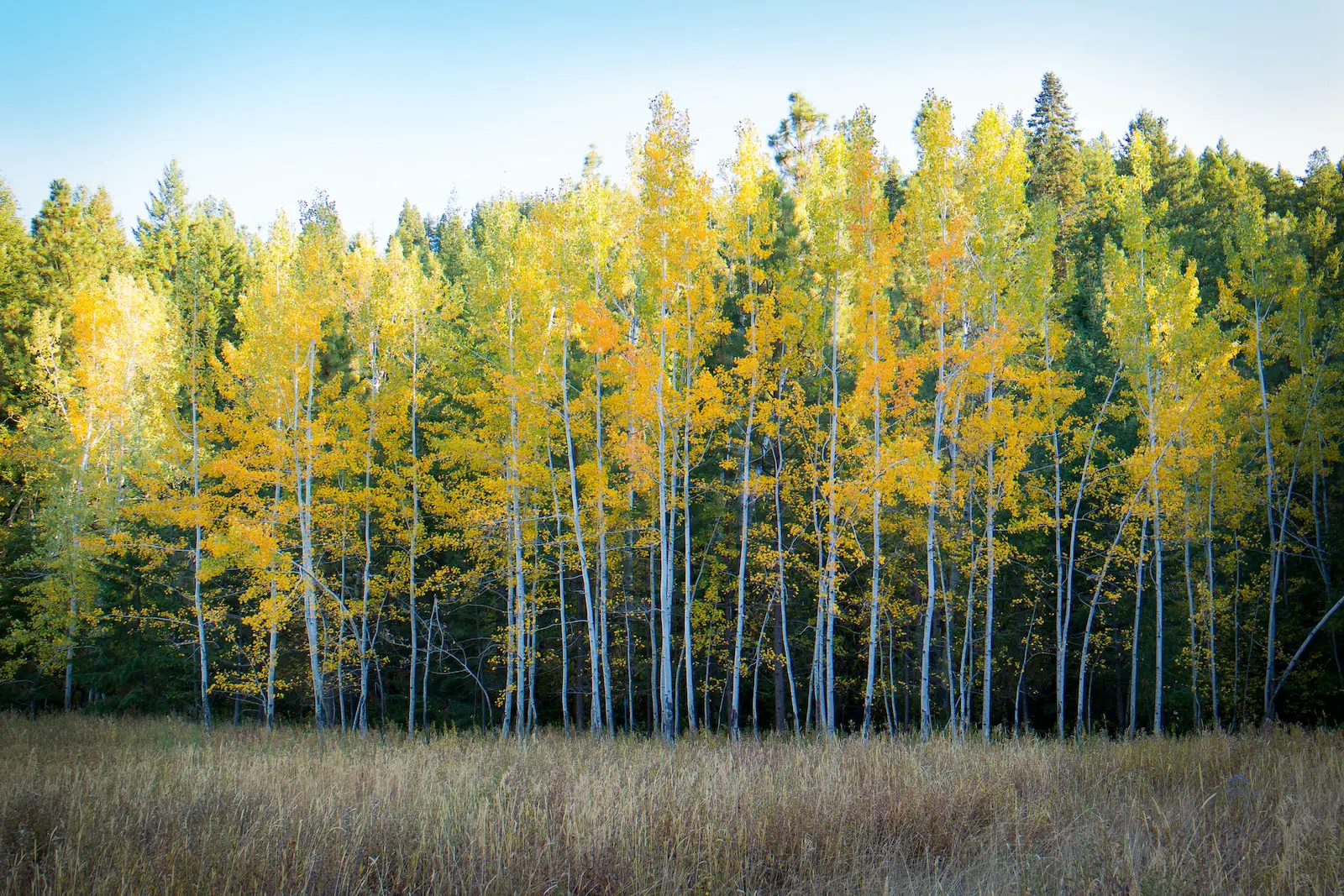Aspen trees, with their characteristic white bark and fluttering leaves, are a staple in various landscapes across the Northern Hemisphere. They are especially known for their striking appearance in autumn when their leaves turn a brilliant golden yellow. Aspens are not just individual trees; they often grow in extensive clonal colonies, derived from a single root system. This remarkable characteristic makes them one of the most unique and fascinating trees in the world.
Aspen trees play a critical role in their ecosystems. They provide food and shelter to a wide variety of wildlife, including birds, mammals, and insects. The undergrowth in aspen groves offers a habitat for numerous plant species as well. Furthermore, aspens are considered a pioneer species, meaning they are often the first to colonize open lands after a disturbance such as a fire.
Not only are aspens ecologically important, but they are also culturally significant. They have been used in various traditional medicines, and their wood has multiple applications, including papermaking. The visual and acoustic beauty of an aspen grove in the wind is something that has inspired artists and nature enthusiasts for generations.
| Attribute | Details |
|---|---|
| Common Names | Aspen, Quaking Aspen |
| Botanical Name | Populus tremuloides |
| Family | Salicaceae |
| Plant Type | Deciduous Tree |
| Mature Size | 40-50 feet tall |
| Sun Exposure | Full Sun |
| Soil Type | Sandy, Loamy, Well-Drained Soil |
| Hardiness Zones | 1-7 |
| Native Area | North America |
Aspen Tree Care
Aspen trees are relatively easy to care for as they are highly adaptable to different soil types and environmental conditions. They thrive in full sun and require well-drained soil. Providing enough space for them to grow is essential as they can spread through their root system and form groves.
Watering is typically only necessary during prolonged dry periods, as aspens are relatively drought-tolerant once established. Pruning can be performed to maintain shape and remove dead or diseased branches. It’s also essential to keep an eye on potential pests and diseases that can affect aspen trees.
Light Requirement for Aspen Trees
Full sunlight is optimal for aspen trees, allowing them to grow strong and healthy. While they can tolerate some shade, too much shade can lead to weaker growth and increased susceptibility to diseases.
Soil Requirements for Aspen Trees
Aspen trees are adaptable to various soil types but prefer sandy, loamy, and well-drained soil. They can grow in slightly acidic to slightly alkaline soil, with a pH range of 5.5 to 7.5. Ensuring proper drainage will help prevent root rot and other soil-borne diseases.
Water Requirements for Aspen Trees
Aspen trees are fairly drought-tolerant once established but may require supplemental watering during extended dry periods, especially in their young stages. Watering should be deep and infrequent to encourage deep root growth.
Temperature and Humidity
Aspen trees are well-adapted to cold climates and can thrive in hardiness zones 1-7. They prefer moderate humidity but can adapt to various humidity levels. Extreme heat can be detrimental, and appropriate care should be taken in warmer regions.
Fertilizer
Fertilizing aspen trees is usually unnecessary, as they can thrive in less fertile soils. If the soil is particularly poor, a balanced fertilizer can be applied in early spring to boost growth.
Pruning Aspen Trees
Pruning is typically done to maintain the tree’s shape, remove dead or diseased branches, and promote overall health. It’s best performed in late winter or early spring when the tree is dormant.
Propagating Aspen Trees
Aspen trees are most commonly propagated through root cuttings, as they naturally grow in clonal colonies. Root cuttings can be taken in early spring and planted in a suitable location.
How To Grow Aspen Trees From Seed
Growing aspen trees from seed is possible but less common. Seeds require stratification and careful handling. Planting seeds directly in their final location in the fall can lead to successful germination.
Common Pests & Plant Diseases
Aphids
These can be managed by using insecticidal soaps or natural predators like ladybugs.
Tent Caterpillars
Manual removal or application of Bacillus thuringiensis (Bt) can control this pest.
Cytospora Canker
This fungal disease can be avoided by proper care and pruning of damaged branches.
Common Problems With Aspen Trees
Sooty Bark Disease
This disease can be fatal and is best managed through prevention, including proper spacing and care.
Root Rot
Caused by poor drainage, root rot can be avoided by ensuring that the soil is well-draining and not overly wet.
Pro Tips
- Plant aspen trees in full sun for best growth.
- Ensure well-drained soil and avoid overwatering.
- Space trees adequately to prevent crowding and disease spread.
- Monitor for common pests and diseases.
- Appreciate the natural beauty of the aspen, especially in autumn when the leaves turn golden.

